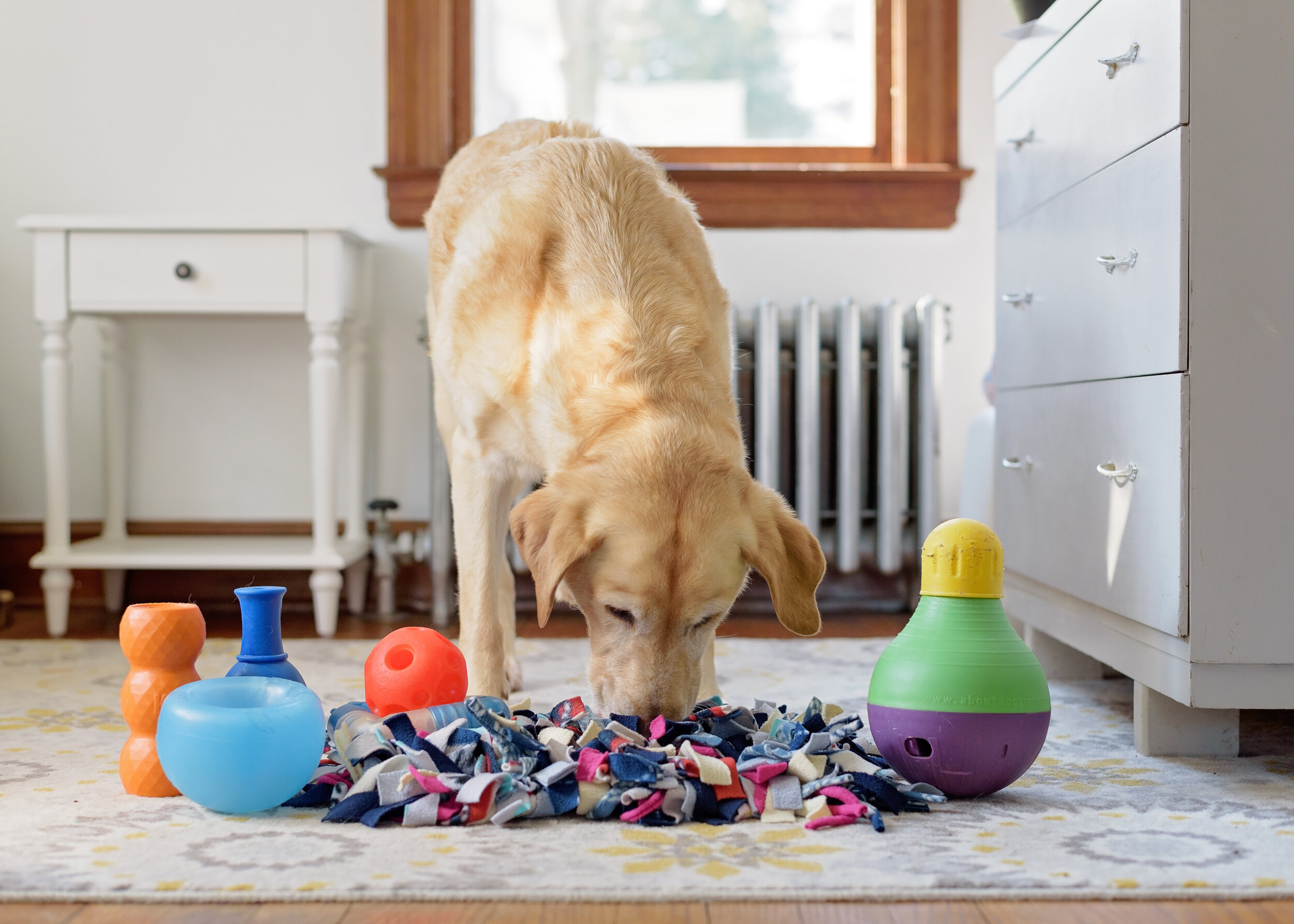When it comes to dog enrichment, it’s easy to assume that more is better. More puzzle toys, more walks, more stimulation. But the truth is, the quality of your dog’s enrichment activities has a far greater impact on their behavior, mental health, and overall well-being than simply the number of things you throw their way.
Let’s break down what enrichment really means—and how to make sure you’re giving your dog experiences that truly meet their needs.
What Is Dog Enrichment?
Enrichment is any activity or experience that gives your dog an outlet for natural behaviors—like sniffing, chewing, digging, problem-solving, or social interaction. It’s not about entertainment. It’s about helping your dog feel fulfilled in body and mind.
Quality Over Quantity
Throwing your dog a new toy every day might seem generous, but if those toys don’t challenge them, match their interests, or align with their breed instincts, your dog may still be bored or under-stimulated.
High-quality enrichment activities are:
- Purposeful – They serve a behavioral, emotional, or physical function.
- Engaging – They hold your dog’s attention and make them think or move.
- Variable – They change over time to prevent predictability and boredom.
- Individualized – They match your specific dog’s needs, personality, and breed traits.
Signs of Meaningful Enrichment
When enrichment is hitting the mark, you’ll notice:
- Your dog is calmer after the activity.
- They engage willingly without needing to be “hyped up.”
- They show focus and problem-solving rather than frantic energy.
- They’re better able to rest afterward (quality enrichment is mentally tiring—in a good way!).
Examples of High-Quality Enrichment Activities
Not all enrichment has to be elaborate. Here are examples of simple yet effective activities that are tailored to real canine needs:
- Scent Work: Hiding treats or toys for your dog to sniff out supports their strongest sense.
- Interactive Play: Tug, fetch, or structured chase games can reinforce bonding and give a physical outlet.
- Training Sessions: Teaching new tricks or practicing known cues builds confidence and provides mental exercise.
- Problem-Solving Puzzles: Use treat-dispensing toys that require strategy, not just brute force.
- Natural Exploration: Sniffari walks allow your dog to engage with the environment at their own pace. This can be done on a long line or unleashed.
Common Mistakes to Avoid
Even with good intentions, enrichment can go sideways if:
- It overstimulates your dog and leads to frantic or reactive behavior.
- You rely only on one type of activity (e.g., physical exercise without mental work).
- You use enrichment as a replacement for connection or communication.
Final Thoughts: Enrichment Is a Relationship Builder
High-quality enrichment is not just a way to “tire your dog out.” It’s a conversation. It helps you understand what your dog enjoys, how they learn, and how they experience the world. Done thoughtfully, it becomes a powerful tool to deepen your relationship, build trust, and prevent behavioral issues before they start.
Ready to rethink your dog’s enrichment routine?
Try swapping out passive toys for more interactive experiences or observe how your dog responds to new activities. The goal isn’t to do more, it’s to do better.
